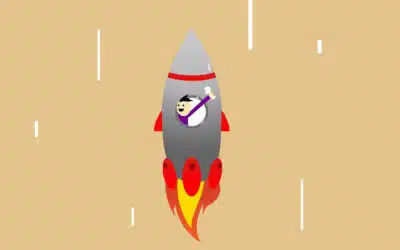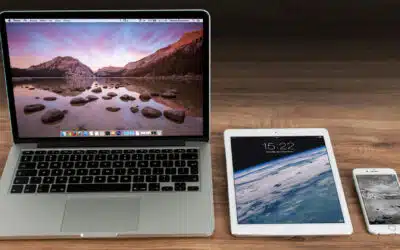The rapid advancements in AI technology have revolutionized numerous fields, and copywriting is no exception, leading many to ask “will AI replace copywriters?” As AI tools like ChatGPT and Quillora become increasingly capable of generating content swiftly and efficiently, a rising concern among copywriters is whether these innovations will render their roles obsolete. However, rather than viewing AI as a threat, many experts suggest that these developments will complement and enhance human creativity.
Despite the impressive capabilities of AI writing tools, there is a consensus among professionals that AI still lacks emotional depth and the nuanced creativity inherent in human writing. While AI can produce well-structured articles and perform tasks like summarizing information or generating keyword-rich text, it fails to capture the personal touch and original voice that human copywriters bring to their work. Let’s delve into how human creativity and AI can work hand-in-hand, making copywriters more efficient without replacing their unique strengths.
For instance, AI’s ability to handle repetitive tasks allows copywriters to focus on higher-level creative strategies. By leveraging AI tools, writers can streamline their workflow, ensuring that their output is both prolific and polished. Platforms like LinkedIn host professional discussions that explore how copywriters utilize AI to enhance their productivity and innovate within their roles.
The perception of AI in copywriting should shift from one of competition to collaboration. Embracing AI can empower copywriters to push the boundaries of creativity and efficiency, setting the stage for the next evolution in the content creation landscape.
The Power of AI in Copywriting
Embracing the potential of artificial intelligence in the realm of copywriting opens up a world of efficiency and speed. AI tools like ChatGPT and Quillora have revolutionized the ability to generate large volumes of content swiftly, catering to high-volume, low-cost writing needs effortlessly. The integration of AI into copywriting allows for consistent, real-time content updates, as highlighted by Sinch Email.
One of the strong suits of AI lies in its data processing capabilities, ensuring the output is grammatically correct and logically structured. The precision with which AI can analyze and utilize data is unmatched, making it an indispensable tool for crafting well-structured content. For instance, Sinch Email’s research demonstrates AI’s prowess in maintaining content consistency, a critical component for brand messaging.
Moreover, AI tools like Quillora excel in producing content that adheres to grammatical standards, thereby reducing the need for extensive editing and proofreading. These tools can be instrumental in managing extensive content calendars, ensuring timely delivery without compromising quality.
While the advantages of AI in copywriting are abundant, it’s vital to acknowledge other aspects that might require a more nuanced touch. This seamless blend of machine efficiency with human creativity ensures that the essence of compelling copywriting is not lost in translation. As we explore further, understanding the limitations of AI can help harness its full potential without overshadowing the irreplaceable human touch.
Limitations of AI and the Irreplaceable Human Touch
While artificial intelligence continues to advance, it still faces significant challenges in areas that require a deep emotional connection, creativity, and context-specific writing. These limitations highlight the irreplaceable role of human copywriters.
AI often struggles with the intricate nuances that convey true human emotion and creativity. Despite sophisticated algorithms, AI lacks the personal touch and ingenuity that comes naturally to humans. AI cannot dynamically adapt based on real-time feedback and changing market conditions. Human writers, on the other hand, excel in storytelling, strategic thinking, and creating emotionally resonant content that captivates audiences.
Moreover, human copywriters bring a unique blend of empathy and creativity that machines simply cannot replicate. They are adept at crafting narratives that resonate on a deeply emotional level, a skill crucial for effective marketing and communication. This unique human touch is especially important for understanding and responding to the ever-evolving needs and desires of consumers.
As our journey continues, it becomes evident that while AI may offer efficiency and data-driven insights, it is the collaboration between AI and human creativity that truly drives innovation and success in content creation.
Symbiosis: AI and Human Collaboration
In an era where artificial intelligence continues to evolve, a collaborative approach between AI and human copywriters can unlock remarkable potential. Rather than replacing human creativity, AI can serve as a powerful ally, handling preliminary tasks and allowing creative minds to focus on higher-level work.
AI can efficiently tackle initial drafts, generate compelling ideas, and optimize content for SEO, freeing up valuable time for copywriters to engage in more complex and imaginative endeavors. AI’s practical applications bring about a synergy that vastly augments productivity and enhances creative output. Furthermore, there are numerous tangible benefits of AI as a supportive tool in the creative process.
There are important ethical considerations to keep in mind, emphasizing the need for human oversight in AI-generated content. Proper human involvement ensures that the content maintains its authentic voice and adheres to ethical standards. When AI and human ingenuity work in tandem, the result is a productive collaboration marked by augmented creativity.
This symbiotic relationship points to a future where AI aids and elevates human talent. As we move forward, the potential of such collaborations encourages a forward-thinking approach that continues to explore the harmonious coexistence of AI and human creativity.
Embracing a Synergistic Future
As we journey through the evolving landscape of copywriting, it is clear that AI has carved out a significant role. The vast capabilities of AI in generating high-volume content quickly and efficiently are undeniable. However, this does not signal the end for human copywriters. Instead, it ushers in a synergistic era where AI and human creativity coexist, each enhancing the other’s strengths.
The unique qualities that human copywriters bring to the table, such as emotional intelligence, dynamic adaptation, and strategic thinking, remain irreplaceable. These skills are essential for creating compelling and relatable content that resonates with diverse audiences. Embracing AI tools can amplify these strengths, streamlining repetitive tasks and allowing copywriters to focus on high-level creativity and strategy.
Key statistics and insights reinforce this positive outlook. Studies have shown that AI can boost productivity by up to 30%, providing an additional resource for professionals to engage in more complex and nuanced projects. The consensus is clear: AI enhances rather than replaces human copywriters, fostering a collaborative environment that pushes the boundaries of creativity and efficiency.
In this new dynamic, embracing AI technology is not just about staying relevant but about pushing forward into a future of limitless possibilities. By leveraging platforms like LinkedIn for ongoing professional insights, human copywriters can continuously adapt and thrive, ensuring a bright and innovative future in the industry.
Embrace AI with Quillora to automate your long-form content and expedite the writing process.





0 Comments